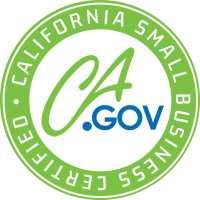Blog


4 Essential Items to Include in a Proposal
Whether you’re new to freelancing or you’ve been doing it for years, knowing how to write a proposal is an essential part of running a freelance business. Unfortunately, this is one of those things that they don’t teach in school.
There are a number of different ways to approach proposal writing, and there are even some scenarios where a formal proposal isn’t even needed. Whatever the case may be in any given situation, there are several items that every proposal must include. Leaving them out or not addressing them adequately can be the deciding factor on whether or not the prospective client chooses you. Let’s take a closer look at the four items essential for sending successful proposals.
Your Qualifications
Clients want to know you can do the work you’re promising to do. And one way to do that is to get an understanding of your background and qualifications. They want to know what’s lead you to where you are now (professionally speaking), what your educational and past employment background is, and what some of your successes have been.
To address this, it’s a good idea to include a short bio in your proposal. It doesn’t have to be long—maybe a paragraph or two. But it should include information that will give the prospect a good idea of who you are and what you’re capable of doing. Tour education, work history, and special skills are always good to include, but don’t be afraid to get a little personal and include things like interests, volunteering you’ve done, awards you’ve won, etc.
Your Portfolio
Clients want to know that you’ve tackled problems or projects similar to theirs, so including a selection of your best, most relevant work is an excellent idea. Try to pick items that showcase your skills in your field and problem solving abilities.
Now, freelancers working in more creative fields have included portfolios since before the internet was invented. Today, though, there are some freelance categories where portfolios aren’t always a good fit. If you’re freelancing as a customer service agent or similar role where you don’t produce something, consider including a short writeup of the companies you’ve worked for and what you feel your top accomplishments were.
Your Ideas
Clients want to know how you are going to solve their problems. To illustrate that, you need to communicate that you a) understand their problems and b) have a solution to fix it. This doesn’t have to be a detailed plan; in fact, part of your proposal may be how you’re going to develop a plan. That means you’ll need to include information on how you’ll go about getting more familiar with the client, their industry, their customers, etc., and how that will contribute to coming up with solutions to their problems.
Your Budget
Last, but certainly not least, is your budget. Clients need to know what your services will cost. Most clients aren’t a fan of hidden fees or surprise charges, so it’s a good idea to outline as specifically as possible what your fee structure is, when the client may incur additional charges, etc.
If you’re a freelancer looking for new clients, you’ve come to the right place. Check out Thankz, our new global marketplace for freelance developers, writers, designers, customer service staff, and more!


![[Veteran or Service-Disabled Veteran] Disability-Owned Business circular certification badge with text shown in circular orientation and with Disability:IN icon logo in center](https://www.thankz.com/blog/wp-content/themes/thankz/images/dobe-badge.png)

